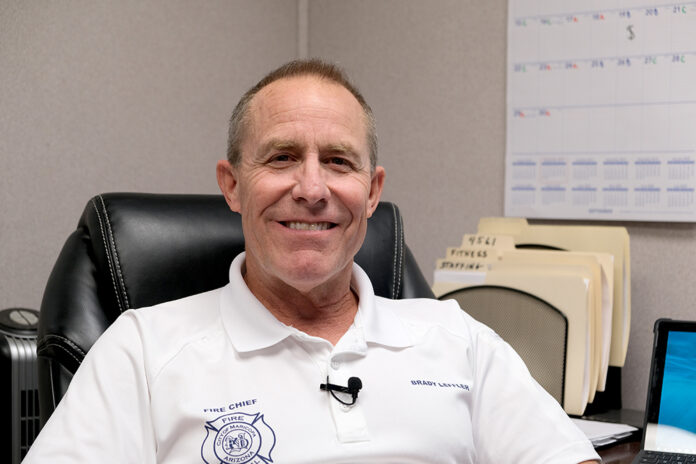
[quote_box_right]BRADY LEFFLER
Hometown: Yuma
Residence: Mesa (soon to be Gilbert)
Family: Fiancée and three grown children
Education: Bachelor’s degree in business management University of Phoenix; master’s degree in education Northern Arizona University
Previous experience: Chandler Fire Department volunteer, Mesa Fire and Medical Department captain, battalion chief, deputy chief and assistant chief, Upper Pine River Fire Protection District deputy chief[/quote_box_right]Brady Leffler has been chief of the City of Maricopa Fire/Medical Department since 2013 and is manning the organization through a city growth spurt. Currently under construction and scheduled to be finished next spring is an administration building that will replace a series of trailers that has housed the MFMD offices for years.
Remind us of your background.
I was born in Santa Fe, New Mexico. Moved to Arizona when I was very young, about a year old, and then grew up in Yuma, in hot Yuma. Loved it as a kid, didn’t want to stay there. My family moved up to Scottsdale. I went to high school in Scottsdale. I took a little bit of an interest in fire service, just from afar. Worked at Motorola for six years, but then volunteered for the fire department until such time as they had an opening for a volunteer. I had to test just like a regular employee. Volunteered for a couple of years for Chandler Fire, then volunteered for another year and a half with Mesa Fire, then started my career in 1986 with the City of Mesa. Spent just short of 25 years in the City of Mesa, retired as an assistant chief and moved up to Colorado. In Colorado I was a deputy chief for about a year. Didn’t really enjoy it. It was very different from what I was used to. Quite a few years behind the times. Then I got a call from a lot of friends that I had here in the Valley, said the City of Maricopa was looking for an interim fire chief. Would I be interested? And I said, ‘Not only yes, but heck yes.’ The interim city manager [Trisha Sorenson] was somebody I had worked with before in the City of Mesa. And I called her, and she said, ‘Send me your resume.’ And I sent her my resume, and she offered me a job the next day. About two months later, they offered me the full-time position.
You came into a department that was in a state, to put it mildly. How did you bring it around?
Honestly, it was in worse shape than I could have ever imagined. The morale was horrible. They were not meeting industry standards in any way, shape or form. The big positive side was the people were fantastic. The firefighters were really committed to doing the job. In my opinion, they just didn’t have a plan to do it right. So, I came in and I basically warned them that there’s going to be a lot of changes, and it’s been changing ever since. I brought a lot of the concepts from Mesa that were tried and true from a larger department that I think they needed. It was a long road, but I believe now we are positioned to be, and I believe we actually are, one of the better departments in the Valley. We go to regional training, and I know a lot of people in the Valley, and I get a lot of comments about the quality of our service. We’ve reduced our response times. We have developed long-range planning in terms of a five-year plan and a 10-year plan for where we want this department to go. We currently have four people in the Mesa Academy, and upon their graduation we will, in my opinion, reach full staffing. It will be the first time in six years.
How many people do you have in personnel?
There are 72 in the department. Frontline, 58 that are response personnel.
How would you describe your personnel right now?
Outstanding. I think everybody would say that, but this is true. We’ve got some real talent. My plan is to stay another three or so years. My focus now is setting this department up for the future with succession planning. The current city manager [Ricky Horst] was kind enough to let me make some reorganizational moves to bring some people in that I believe are very, very talented and capable of running this department. They just need some time. So, my focus has shifted from building the department to basically getting it ready to move in the next five, 10, 15, 20 years.
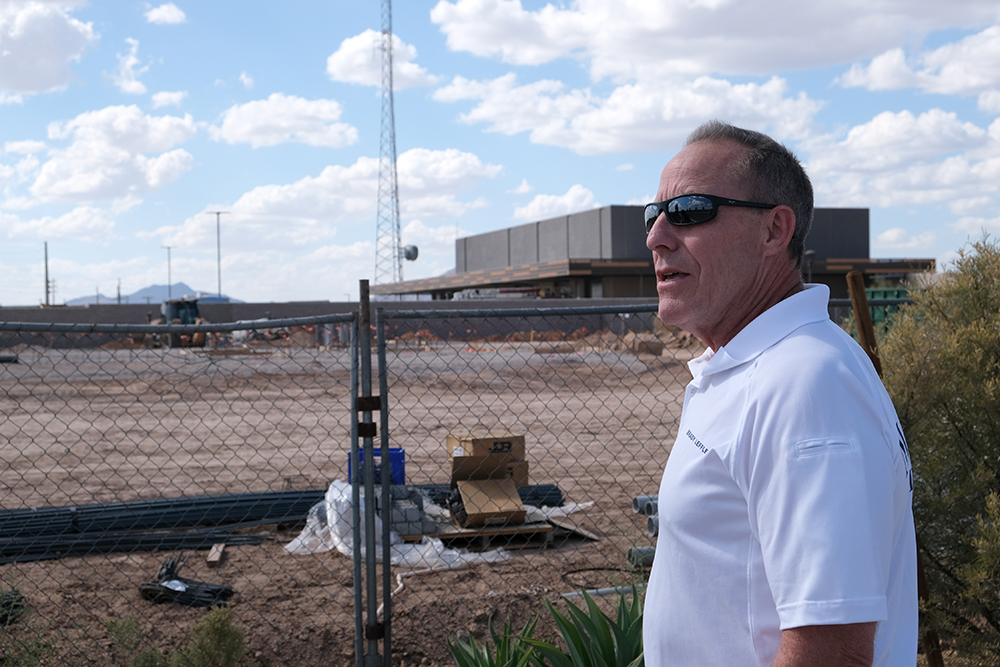
What do you think has been the greatest achievement of this department since you’ve been here?
Probably just the attitude. Honestly, the attitude was not good when I got here. There was no trust. The previous fire chief in particular, the one they had a vote of no-confidence on, they did not trust him. They did not trust anything that was put forth in terms of a plan. They didn’t feel like they had a voice. I’ve given them that voice. I’ve worked real hard with the labor group to build that relationship. I think that overall they believe in the administration now. They see a plan. They understand that we have a definite plan moving forward.
What are your greatest challenges right now?
The growth of the city is a challenge. There’s a lot of new businesses coming in. Our prevention bureau is at max right now. We’re using people from the field to come in and augment the amount of plans review and inspections and things like that. So we’re working on that real hard. Changing technologies. Electric vehicles. The dangers out there to the firefighters are substantial. They are much worse than when I was out in the field based on the new stuff that’s out there like battery storage stations and things like that. Just keeping up with the changing times in a very traditional service is a challenge.
You are getting a new administration building. How will that improve the operations of the department?
It kind of goes in line with the reorganization that we’ve just done. It basically puts people in the right places with the right tools to take this administration to a new level, to organize more accurately, to integrate with our surrounding partners, both mutual-aid and automatic-aid partners. We’re trying to do some of our own teaching. We are upgrading our technology in terms of getting the word out because sometimes it’s difficult with their schedules, so teleconferencing, things like that. I think it’s going to bring us to another professional level. When people come here to visit in this trailer, which is much better than what we used to have, it’s still difficult here sometimes when we have sensitive conversations we go to our cars because the walls are thin here. Sometimes it’s personnel-sensitive material we don’t want overheard. That will go away with the new building.
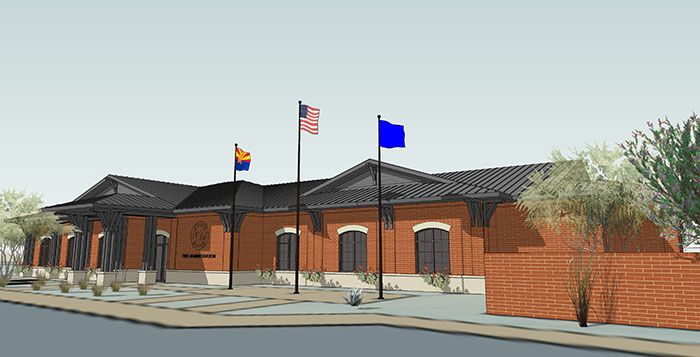
What’s your favorite aspect of the new building?
Everything. The previous place to this one was old and run-down, and it had multiple, multiple problems. I won’t go into the details. This place, thanks in large part to ADOT because ADOT has helped us with this move, this is much better. But again, it’s still a trailer, and it’s still a mobile and it still has paper-thin walls, and we still have issues with rodents and the like. But, again, there’s a beautiful new building on the horizon, which is very welcome.
Do you use the snakes and bees for training?
In the City of Maricopa we get a lot of snake calls in the summertime, and so they get a lot of experience doing that. We’ve had bee problems here. We’ve had them roost on the corner of the building, so we had to have our guys come out and kind of shoo them away. They actually relocated on their own, but we were going into the back entrance for a while. Across the way there, we’ve had rattlesnakes inside. We’ve had rattlesnakes here but not inside. Yeah, that’ll get your attention in a hurry.
Half the city budget goes to fire and police. What cost-saving procedures to you have in place?
We look at, as far as the fleet is concerned, fuel efficiency. In terms of our large ladder truck, we use a ladder-tender concept. We put them in a smaller engine. About 80 to 85 percent of our calls are medical in nature. So, we ought not to take the big, large, ladder truck, but yet we equip the smaller, more nimble, more fuel-efficient truck with the necessary equipment in the event that they did get a call for a fire when they’re out. I know the City is looking at centralizing all the printers. There’s a lot going on now to reduce costs. We built the new building with efficiency in mind. We put in foam walls with concrete between. I believe it gives us an almost R50 rating on the walls, which is very energy-efficient. The cooling system was designed so its efficient. Just about everything we do, we try to scale back, do everything we can to reduce costs.
Is there any important equipment of programs that you don’t have because of cost constraints?
Not really. In six years, we’ve come a long, long way, and we’re basically to the point where I think we should be. Going forward, as this city continues to grow at the pace that it’s growing, there will be additional costs that will be necessary. A new station within the next seven to 10 years is going to be necessary, probably south of the tracks. I think a lot of the economic development is moving that direction. We’re pretty well built on the northern side of town. That will require more personnel. We eventually would like to explore running our own ambulance service. That’s somewhere down the road. We essentially are just preparing for growth. If it takes off like it did before, it’s going to be a challenge. Our mindset is to look forward and prepare for that.
The local firefighters’ union has an agreement with the City that includes a pension plan that doesn’t seem to impact their Social Security benefits. How does that work?
They’d probably answer that question better than I can. Essentially, they are part of the Public Safety Personnel Retirement System (PSPRS). The majority of the firefighters in the Valley that are part of that system do not pay Social Security, but way back when the City began, there were some issues with how that was orchestrated. So, they were charged with Social Security. The City made an agreement with them to help them with that because it was just a mistake at that time. I’m not sure if that answers your question, but there have been ongoing discussions about how to deal with that.
Is that important for getting quality hires for the department?
No. This is a very coveted position.
Why did you want to be a firefighter in the first place?
It’s funny, when I first started, I didn’t. I wanted to be a police officer. My oldest brother was a police officer. My dad, way way back, had a stint as a public safety person. I went to school to become a police officer. I had a really good instructor who was a judge and a former police officer in south Phoenix. Back in my day I had a temper, and some of the things he talked about and my brother talked about, I thought, ‘You know what, I’d rather be on the fire side.’ And I don’t regret it one bit. I have great respect for police officers. As a matter of fact, I think it’s one of the toughest times to be a police officer. My future wife is a retired Scottsdale Police officer, and I’ve got to tell you, I have the utmost respect for them. I wouldn’t change what I do for anything.
Do you commute?
I do. I just sold my home in Mesa, and I’m having a home built in Gilbert. Started to move here, but my fiancée’s business is within a 10-mile radius of her house, so that wouldn’t work.
What are you looking forward to most as far as where you want this department to go?
I think it’s kind of where I want it to be now in terms of structure, in terms of organization. I want to see increased training, I want to see more certified safety officers, and I want to see this department completely prepared for what I feel is going to be explosive growth in this city. Not to be behind that curve, if we can do some things now, get some things in place in terms of hiring, get some things in place as far as funding for stations and firetrucks and things like that and get that ready for the next five or 10 years, which I think is going to be amazing.
This story appears in part in the October issue of InMaricopa.

![3 things to know about the new city budget Vice Mayor Amber Liermann and Councilmember Eric Goettl review parts of the city's 2024 operational budget with Mayor Nancy Smith on April 24, 2024. [Monica D. Spencer]](https://www.inmaricopa.com/wp-content/uploads/2024/04/spencer-042424-preliminary-budget-meeting-web-218x150.jpg)




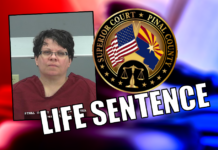
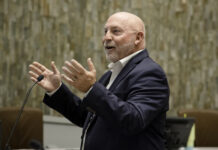
![MHS G.O.A.T. a ‘rookie sleeper’ in NFL draft Arizona Wildcats wide receiver Jacob Cowing speaks to the press after a practice Aug. 11, 2023. [Bryan Mordt]](https://www.inmaricopa.com/wp-content/uploads/2024/04/cowing-overlay-3-218x150.png)



![Alleged car thief released without charges Phoenix police stop a stolen vehicle on April 20, 2024. [Facebook]](https://www.inmaricopa.com/wp-content/uploads/2024/04/IMG_5040-218x150.jpg)

![3 things to know about the new city budget Vice Mayor Amber Liermann and Councilmember Eric Goettl review parts of the city's 2024 operational budget with Mayor Nancy Smith on April 24, 2024. [Monica D. Spencer]](https://www.inmaricopa.com/wp-content/uploads/2024/04/spencer-042424-preliminary-budget-meeting-web-100x70.jpg)


